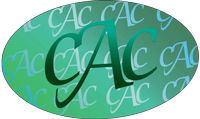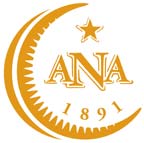Seated Liberty Half Dollars
Seated Liberty Half Dollars were minted from 1839 to 1891. They were made in Philadelphia, New Orleans, and San Francisco.
Many minor design changes were made over the years. There are many scarce and rare dates in the Seated Liberty Half Dollar series.
- Found 65 items
 1841. PCGS. MS-64.$5,995.00
1841. PCGS. MS-64.$5,995.00Sharply struck with rich satiny luster and a light dusting of gold toning. Only a single MS-65 has graded finer at PCGS.
Item #247782 (1 / 65) 1842. PCGS. AU-55.$995.00
1842. PCGS. AU-55.$995.00Small Date, Reverse of 1842. Sharp detail with rich toning and vivid underlying luster.
Item #247225 (2 / 65) 1842. PCGS. MS-61.$1,475.00
1842. PCGS. MS-61.$1,475.00Medium Date. Creamy surfaces with a sharp strike.
Item #250747 (3 / 65) 1844-O. NGC. AU-55.$5,250.00
1844-O. NGC. AU-55.$5,250.00Doubled Date. FS-001. All digits in the date are dramatically doubled with the first punching far too high and into the base of Miss Liberty. This example has beautiful original silver-gray surfaces with a subtle hint of gold. The surfaces are lustrous and nearly mint state and examples are seldom seen this nice. Only 4 have graded finer at NGC, all AU-58. A high quality example of this dramatic variety.
Item #238668 (4 / 65) 1846. PCGS. AU-55.$795.00
1846. PCGS. AU-55.$795.00Tall Date. Lustrous silver-gray surfaces.
Item #219499 (5 / 65) 1846-O. NGC. AU-53.$3,075.00
1846-O. NGC. AU-53.$3,075.00Tall Date. Sharply stuck with original surfaces that have a blend of light gray shading and subtle gold hues. Only 8 'Tall Dates' grade finer at NGC with just 2 of these graded with 'mint state' designations.
Item #251124 (6 / 65) 1847-O. NGC. MS-62.$2,375.00
1847-O. NGC. MS-62.$2,375.00Boldly struck and mostly white with a dusting of light gold and no heavy marks. Scarce in mint state despite a substantial mintage.
Item #247717 (7 / 65) 1850-O. PCGS. AU-50.$550.00
1850-O. PCGS. AU-50.$550.00Light steel-gray.
Item #234773 (8 / 65) 1853. NGC. AU-53.$675.00
1853. NGC. AU-53.$675.00Arrows and Rays. Medium steel-gray surfaces with a light overlay of gold hue.
Item #251383 (9 / 65) 1853. PCGS. MS-64.$5,500.00
1853. PCGS. MS-64.$5,500.00Arrows and Rays. Sharply struck with frosty crisp white luster. Marks are minimal and of no significance.
Item #247221 (10 / 65) 1853. PCGS. MS-65.$18,950.00
1853. PCGS. MS-65.$18,950.00Arrows and Rays. Intense silver-gray luster flows over very sharply struck surfaces and displays excellent eye appeal. Marks are trivial and few. Arrows and rays were added to the existing design in 1853 to denote a reduction in silver content. The following year, the rays were eliminated but the arrows remained. The result was this wonderful one-year type.
Item #250927 (11 / 65) 1856-O. PCGS. AU-53.$450.00
1856-O. PCGS. AU-53.$450.00Light silver-gray surfaces with soft gold hue and touches of russet tint along the periphery.
Item #245010 (12 / 65) 1856-O. PCGS. XF-45.$250.00
1856-O. PCGS. XF-45.$250.00Steel-gray shaded surfaces and sharp detail.
Item #212472 (13 / 65) 1857. PCGS. PR-64.$8,995.00
1857. PCGS. PR-64.$8,995.00A rare issue with a mintage of 50. This example displays richly mirrored champagne-gold surfaces with touches of lavender-blue along the periphery. Only 6 examples grade numerically finer at PCGS.
Item #249619 (14 / 65) 1858-O. PCGS. MS-62.$1,050.00Choose from 2 different coins!Item #225552 (15 / 65)
1858-O. PCGS. MS-62.$1,050.00Choose from 2 different coins!Item #225552 (15 / 65) 1859. NGC. PR-66. CAM.$14,950.00
1859. NGC. PR-66. CAM.$14,950.00A rich blend of lavender-gold tone covers exceptionally nice mirrored surfaces. A blue-green ring clings to the peripheries. Only 800 minted during the first year that proofs were sold to the public by the U. S. Mint.
Item #250072 (16 / 65) 1859-S. PCGS. MS-63.$4,250.00
1859-S. PCGS. MS-63.$4,250.00Sharply struck with frosty white mint luster and touches of faint violet-gold accents along the outer core.
Item #222392 (17 / 65) 1860. NGC. PR-63.$1,750.00
1860. NGC. PR-63.$1,750.00Very attractive with nicely mirrored fields and frosted devices.
Item #233626 (18 / 65)
 1860. PCGS. PR-64+.$3,950.00
1860. PCGS. PR-64+.$3,950.00CAC. A beautiful example with reflective mirrors and frosted devices. Faint gold dusting flows across the surface and touches of deep blue-gold toning clings to the periphery. Great eye appeal!
Item #250896 (19 / 65) 1864. NGC. MS-64.$4,500.00
1864. NGC. MS-64.$4,500.00Satiny white and sharply struck. A popular Civil War date.
Item #250723 (20 / 65) Show more items...
Show more items...
- 65 items found















